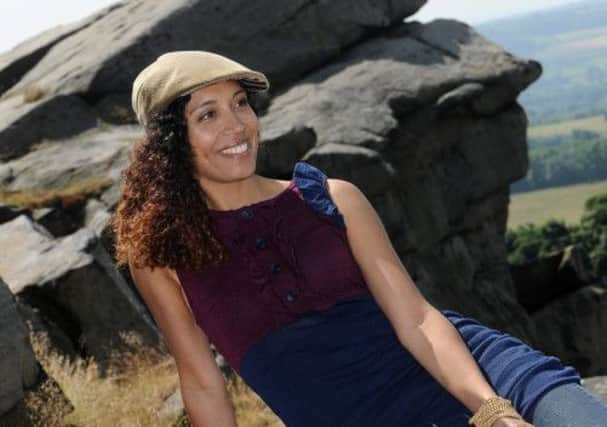The cap that rose again


They don’t make Acts of Parliament like they used to.
While current legislation may be all about legal aid and same-sex marriages, back in 1571 the government of the day was busy drafting a Bill to increase the wearing of hats among the British public.
By the end of that year it was decreed that on Sundays and holidays, “all males over six years of age, except for the nobility and persons of degree” were to wear woollen caps on pain of a fine of three farthings.
Advertisement
Hide AdAdvertisement
Hide Ad

The idea was little to do with fashion – its aim was to stimulate domestic wool consumption and boost the home economy. However, as the lawyers were dotting the Is and crossing the Ts they were also unwittingly sowing the seeds of a British design classic. The flat cap was born.
Pinpointing the moment it became entwined with a peculiarly northern stereotype is less easy, but by the time Andy Capp began gracing the pages of the Daily Mirror in the 1950s the flat cap had already come to represent a breed of white working class men, the kind who wore braces over their vests and long johns under their trousers.
Rhian Kempadoo-Millar is well aware of the connotations that come with those two little words, but the Leeds designer is also convinced that with the addition of a little luxury silk and a few cutting edge tweaks to the standard design, she might just have reinvented the symbol of Yorkshire grit as a must-have item for a fashion hungry public.
“There’s got to be a reason that it has survived so long,” says the Leeds designer, who recently unveiled her first range of flat caps which bear little resemblance to those that filled the wardrobe department of Last of the Summer Wine. “In some ways it’s quite a simple design, but it works.”
Advertisement
Hide AdAdvertisement
Hide AdRhian certainly practises what she preaches. Ask those who have met her to describe the 36-year-old and most will remember her as the girl with the curly hair and the flat cap.
It was also her dad’s headwear of choice, which during the 1980s he matched with smart, but slightly outlandish golfing outfits – this was after all the decade where Pringle made pink acceptable for men.
“He was Scottish Jamaican, he wore flat fronted Farrahs and bright colours, the kind of clothes most people couldn’t get away with, but he always looked incredibly stylish. Dad died when I was 10, but whenever I think of him, he’s wearing a flat cap. To me it’s never been associated with that dour working class image, it was always something much more classy than that.”
While flat caps have been a staple of her own wardrobe for as long as Rhian can remember, it’s only recently that she had the idea to return to her creative roots and launch her own business.
Advertisement
Hide AdAdvertisement
Hide AdRhian, who grew up in Newcastle before her family moved to near Pontefract, trained in theatre costume design at Central St Martins in London and her first job was for a computer game company in the heart of the capital. Then in her early 20s she spent her days running up and down Oxford Street, sourcing costumes as part of the character concept and development for games like The Getaway, and her evenings socialising.
It was the perfect young, free and single lifestyle, until she became pregnant. By the time her eldest son Ajuba was born, Rhian had moved back north to Leeds and when a second boy arrived two years later, she needed a job that would fit around the school run.
“I set up with a friend running art workshops in schools,” she says. “It was perfect, but then a couple of years ago as the boys were getting older my mum, who now lives out in Trinidad, suggested that I should find some time for myself to do something creative, even if it was for just one day a week. I enrolled on the millinery course at Leeds College of Art run by Sharon Bainbridge. I just loved it and everything that I’m doing now started from there.”
One of the course projects was to make a hat from what’s known as a flat pattern design. Having chosen a flat cap, it set Rhian wondering whether there might be an unexplored market for the traditional headwear. The idea was sealed with a trip to New York.
Advertisement
Hide AdAdvertisement
Hide Ad“Every other guy there was wearing a flat cap, but I was the only girl,” says Rhian. “People kept asking me where I got my hat, who’d made it and where they could buy one. When I came back home I began investigating what companies were making flat caps in Britain and discovered that in the last five years, a lot of the big names like Kangol and Failsworth had moved the majority if not all of their manufacturing overseas.”
Determined that there must be a way to bring the flat cap back to Yorkshire, Rhian took out a map of the county and drew a big circle enclosing everything within a 30 mile radius of Leeds. As well as the urban sprawl, it took in a slice of the county’s old manufacturing heartland, the edge of the Dales and a 130-year-old textile firm.
“Finding Bateman Ogden was key to the whole project,” she says. “They supply to Savile Row and the fashion houses of Paris, but it’s all material made from the fleece of sheep which have spent their days eating Yorkshire grass. The mill is in Keighley and as soon as I went to see them everything began to fall into place.”
Rhian’s search for an all-Yorkshire production line had begun. Within a few weeks Leeds silk importing company James Hare was onboard and while the net had to be widened a little further, she also secured the services of a talented sample maker in Hull. The circle was completed by Castleford firm Lawrence and Foster.
Advertisement
Hide AdAdvertisement
Hide AdBorn out of the ashes of another hat maker, the company already turns out 150,000 flat caps, deerstalkers and trapper hats each year and much of the work is done by hand – in fact the nearest the operation gets to modern technology is an electric sewing machine.
“I think they thought I was mad when arrived on their doorstep with one of my designs,” says Rhian. “I’d had to run up a sample pretty quickly, so I’d stiffened the peak with cardboard from a carton of cornflakes and for a company which specialises in the traditional, the designs were pretty out-there.”
Rhian’s new range sees the traditional male flat cap recast in vibrant colours and her trademark design for women features a striking silk tie. However, far from thinking she had lost the, plot, Lawrence and Foster’s Robert Fairbairn is convinced there is a market for a 21st-century twist on the old favourite.
“I won’t lie, our bestseller was and is the traditional Garforth cap. If you imagined a flat cap that would be it, but that’s not to say that there isn’t room for alternatives.
Advertisement
Hide AdAdvertisement
Hide Ad“I honestly thought Rhian and her designs were great and you can tell she has a real passion for what she is doing.
“In the last four or five years we have noticed an increased number of orders for children’s flat caps in bright colours. Design houses are always on the lookout for what their competitors are doing. If something works then it really doesn’t take long for everyone else to jump on board.”
Having secured business support from the Key Fund, which over the last 10 years has invested £26m in creative enterprises across Yorkshire and financial backing from her old employer, the final piece of the jigsaw fell into place. Lawrence and Foster ran up a few dozen of Rhian’s different designs and just to make sure there was a viable market she began approaching boutiques.
“I was really only looking for feedback, I wanted to know what colours they liked, what styles they thought would work best, but one of the first shops I went into bought all six samples I had with me.”
Advertisement
Hide AdAdvertisement
Hide AdBuoyed by that early success, Rhian has decided to call her first range Trinidales – a nod to both her family heritage and her love of the Yorkshire countryside.
A number of boutiques, including Boho Chic in Harrogate and Leeds’s Handpicked Hall, are already stocking her caps, the website is up and running and after a visit to the Great Yorkshire Show earlier this month she’s hoping to be back next year as an exhibitor.
If that does happen, the flat cap will finally have come home.
“I did wonder whether now was the right time to launch an accessories business, but it does seem to have struck a chord. The basic flat caps retail at around £40 to £45, but even the bespoke £125 designs are selling really well.
Advertisement
Hide AdAdvertisement
Hide Ad“I think the economic downturn has made people think about what they buy more.
“While they might not be splashing out on an entirely new outfit they do seem to be willing to invest in accessories like handbags and hats if they think it will last.”
It’s early days yet, but if success depends on dedication then Kempadoo-Millar has pretty solid foundations.
“Five per cent of the business is probably design and 95 per cent is hard work,” says Rhian. “ I get up at 5am, work until 7am when the boys get up, then begin again once they’ve gone to school. I spend most of my time running around to different factories, but do you know what? That’s the bit I love the most.”
Visit Rhian’s website at www.kempadoo.com.